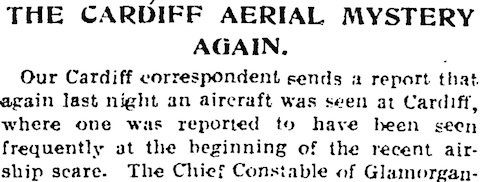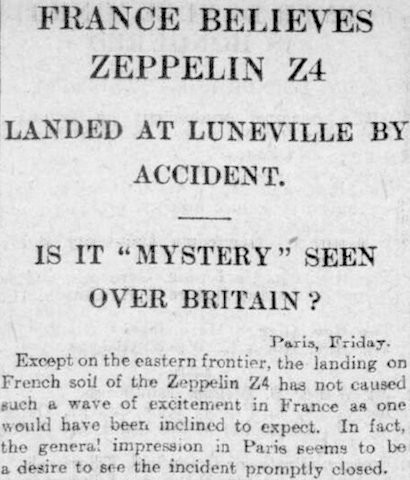Wednesday, 9 April 1913
It’s been a while, but after three previous visits the mystery airship has returned to Cardiff. From the Manchester Guardian (p. 9; above): Our Cardiff correspondent sends a report that again last night [8 April 1913] an aircraft was seen at Cardiff, where one was reported to have been seen frequently at the beginning of […]




